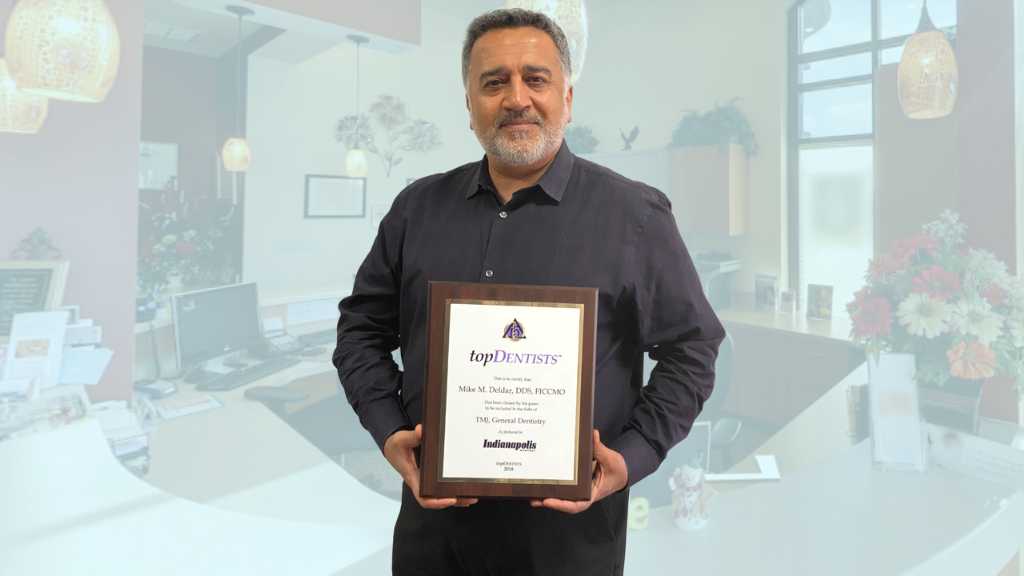April is Oral Cancer Awareness Month. Why should this concern you? While the statistics for mouth cancer haven’t reached the proportions of other cancers, numbers are in fact rising and growing to prominence. That means that more people that you care about—including yourself—are at risk.
In the spirit of awareness, I wanted to give my Noblesville and Indianapolis patients some information about this disease. I thought it would be interesting to see how Indiana compares to the rest of the US. Plus, I want to share some of the risk factors.
Oral Cancer Awareness Month: Why we need it
According to the American Cancer Society’s most recent estimates, this type of cancer will kill almost 10,000 people this year. That is out of the 50,000 people who will be diagnosed. In other words, 1 in 5 who are diagnosed will die.
That is an alarming estimate. Granted, the numbers aren’t as staggering when compared to breast cancer or lung cancer. But remember: the numbers are expected to go up, not just this year, but for the foreseeable future.
That is why we need more awareness. We all need to be warned and stay watchful. And that includes being on the watch for mouth cancer symptoms and risk factors. Oral Cancer Awareness Month allows us to do just that.
How is the US being impacted by mouth cancer in recent years?
What other statistics have been released by the American Cancer Society?
- More men than women are diagnosed with this type of cancer.
- There has been a recent rise in both men and women, with the cancer being related to the human papilloma virus (HPV).
- One-quarter of patients diagnosed with this type of cancer are younger than 55.
- Many patients who have been diagnosed with oral or oropharyngeal cancers end up having cancer near or in the esophagus and lungs.
How do these statistics relate to the state of Indiana? Here are some local statistics from the Indiana State Government’s Cancer Facts & Figures Source Book.
- The rate of esophageal cancer, which can be related to mouth cancer, is over twelve percent higher in Indiana than the rest of the US. The death rate from this type of cancer is 8.5 percent higher than other US states.
- Indiana oral cancer statistics are pretty much right in line with US statistics. Thankfully, the death rate from this cancer is over eight percent lower than the rest of the US.
Risk Factors & Symptoms of Head, Neck, and Mouth Cancer
Statistics can be quite sobering, especially when they relate to cancer. My goal is not to depress or scare anyone; it’s to educate. On that note, let’s move onto oral cancer risk factors. You could be at risk for oral cancer if you:
- Smoke or chew tobacco. There has even been some concern over vaping and marijuana.
- Consume a lot of alcohol.
- Have had a lot of sun exposure.
- Have been exposed to the human papilloma virus (HPV) through sexual contact.
- Have poor oral hygiene.
- Don’t eat a nutrient-rich diet.
What are the symptoms of oral cancer?
Some people have a lump or bump in their throat that just won’t go away. Others have a white, red, or multi-colored patch on the soft tissue in their mouth or throat. Still others have swelling and tenderness in their jaw, mouth, and/or throat. The latter is sometimes accompanied by a raspy voice that won’t go away.
Why you should come into our office for regular oral cancer screenings
During Oral Cancer Awareness Month, I would like all of my patients to schedule an appointment for a mouth cancer screening. I use the Velscope screening system. This system allows me to get a closer look at my patients’ oral tissues. It takes only five minutes and is affordable. Typically, this Velscope screening costs $50 – however, throughout April, we are charging only $25 for the exam.
The better I can see, the higher the likelihood that I will be able to make an early diagnosis. The sooner we get a diagnosis, the higher the probability that we can treat the cancer successfully.




